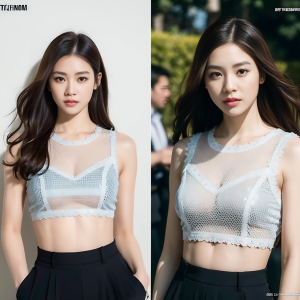The Science of Clothing Alterations: Understanding Fabric and Construction! |
|||||||
|---|---|---|---|---|---|---|---|
|
|
|||||||
Introduction:The Science of Clothing Alterations: Understanding Fabric and Construction! Hey there, fashion enthusiasts! Are you ready to dive into the fascinating world of clothing alterations? Whether you’re a DIY fashionista or seeking professional tailoring services, understanding the science behind fabric and construction can make all the difference. In this blog post, we’ll embark on an exciting journey to uncover the secrets of altering clothes. So, grab your measuring tape and let’s get started!. Let’s explore some common fabrics and what you need to know about them: Cotton: This natural fabric is breathable, comfortable, and easy to work with. It’s perfect for everyday wear and can be altered with relative ease. Silk: Known for its luxurious feel and lustrous appearance, silk requires delicate handling during alterations. Professional tailors with expertise in working with silk can help preserve its beauty and integrity. Denim: A sturdy fabric primarily used in jeans, denim can be altered to achieve the perfect fit. However, its thickness and density may require special techniques, such as using heavy-duty needles or employing reinforced stitching. Polyester: A synthetic fabric, polyester offers durability and resistance to wrinkles. It can be altered effectively, but extra care must be taken to ensure precise measurements and minimize any alterations that could affect the fabric’s drape. Wool: This natural fabric provides warmth and versatility. While wool garments can be altered, it’s important to consider potential shrinkage and to use specialized techniques for maintaining the fabric’s structure and texture. Unlock the power of fabric knowledge and make confident choices in your clothing alterations. Whether it’s cotton, silk, denim, polyester, or wool, understanding each fabric’s unique traits ensures gratifying and successful alterations. Embrace the science of fabric and elevate your style through personalized adjustments. Get ready to transform your wardrobe like never before!
|
|||||||
 |
|||||||
Fabrics: The Building Blocks of Style:When it comes to clothing alterations, understanding different fabrics is crucial. Each fabric has its own unique characteristics, properties, and behaviors, which can greatly impact the alteration process. Let’s explore some common fabrics and what you need to know about them: Cotton: Imagine your favorite cozy t-shirt or a breathable summer dress – chances are, they’re made of cotton. Cotton is a natural fabric known for its softness, comfort, and breathability. It’s also relatively easy to work with, making it a popular choice for clothing alterations. Whether you’re shortening the sleeves of a cotton shirt or taking in the waist of a cotton dress, cotton fabrics are versatile and forgiving. Silk: Ah, silk! This luxurious fabric is smooth, shiny, and incredibly delicate. It exudes elegance and sophistication. When it comes to altering silk garments, it’s essential to handle them with care. Silk can be sensitive to heat, pressure, and certain stitching techniques. Therefore, it’s often recommended to entrust your silk garments to experienced tailors who have expertise in working with this exquisite fabric. Denim: Denim is a sturdy, durable fabric primarily associated with jeans. It’s thick, dense, and often woven with a diagonal pattern called a twill weave. Altering denim requires special techniques and tools, as standard sewing needles may struggle with the fabric’s thickness. Tailors may use heavy-duty needles, reinforced stitching, or even employ specialized machines to ensure precise alterations without compromising the fabric’s integrity. Polyester: Polyester is a synthetic fabric known for its durability, wrinkle resistance, and ease of care. It’s often blended with other fabrics to enhance their qualities. Polyester can be altered effectively, but extra attention must be paid to accurate measurements and maintaining the fabric’s drape. Since polyester is less breathable than natural fabrics, tailoring alterations to ensure a comfortable fit is essential. Wool: When it comes to warmth and versatility, wool is a go-to fabric. It’s commonly used in sweaters, coats, and suits. Wool garments can be altered, but it’s important to consider potential shrinkage that may occur during the alteration process. Specialized techniques, such as steaming and blocking, can help maintain the fabric’s structure and texture while achieving the desired fit. Understanding the characteristics of different fabrics empowers you to make informed decisions when it comes to clothing alterations. Whether you’re working with cotton, silk, denim, polyester, or wool, taking fabric-specific considerations into account will ensure successful and satisfying alterations. So, get ready to embrace the science of fabric and elevate your style through tailored adjustments! ?Importance of Fabric Understanding:
?Characteristics of Common Fabrics:
?Considerations for Alterations:
|
|||||||
 |
|||||||
| Ella’s Alterations LLC 813-445-8894 https://ellasalterations.com | |||||||
Construction: The Art of Shaping Style:Understanding the construction of a garment is like unraveling its secret code. The way fabric pieces are sewn together and the structural elements employed play a crucial role in achieving the desired fit and style. Let’s delve deeper into the key aspects of garment construction: Seams: Seams are the stitching lines that hold fabric pieces together. Different types of seams are used depending on the garment and desired outcome. Straight seams, where fabric edges are sewn together in a straight line, are commonly seen in basic constructions. French seams, on the other hand, provide a neat finish by enclosing raw fabric edges within the seam. Overlocked or serged seams are frequently used to prevent fabric fraying. Understanding the purpose and strength of different seam types allows tailors to choose the most suitable technique for each alteration. Darts: Darts are triangular folds sewn into the fabric to provide shape and contour, particularly in fitted garments. They are commonly found in areas such as the bust, waist, or back. By altering the position or length of darts, tailors can achieve a more tailored fit that accentuates the wearer’s body shape. It’s akin to creating custom sculpting, enhancing curves or achieving a streamlined look. Understanding how darts work and their impact on garment fit allows for precise alterations that flatter the wearer’s figure. Hems: Hems are the finished edges of a garment, usually found at the bottom of skirts, dresses, or sleeves. Altering the length of a hem can completely transform the look and feel of a piece. Whether you want to shorten a skirt or lengthen trousers, the hem plays a crucial role in achieving the desired proportions. Skilled tailors carefully measure and mark the new hemline before making precise adjustments. A well-executed hem alteration ensures a polished and balanced appearance. Zippers and Buttons: Zippers and buttons are essential components of garments, providing closures and adding functional and aesthetic elements. Alterations involving zippers and buttons require attention to detail. For instance, replacing a broken zipper or repositioning buttons to achieve a better fit necessitates precise measurements and stitching techniques. Skilled tailors have the expertise to seamlessly integrate zippers or buttons into altered garments, ensuring functionality and a cohesive look. Understanding garment construction is a fundamental aspect of clothing alterations. By familiarizing yourself with different types of seams, the purpose of darts, the importance of hems, and the intricacies of zippers and buttons, you can appreciate the artistry and technique that goes into shaping style through alterations. The careful manipulation of these construction elements allows for customized fits and the creation of garments that make a statement. ? Importance of Understanding Construction:
? Key Elements of Construction:
? Tailoring Techniques:
|
|||||||
 |
|||||||
| How to Get Your Wedding Dress Tailored to Perfection with Ella’s Alterations | |||||||
| Ella’s Alterations LLC 813-445-8894 https://ellasalterations.com | |||||||
The Perfect Fit: Tailoring Tips and Tricks:Now that we have explored fabrics and construction, let’s delve into some handy tips and tricks for achieving the perfect fit through clothing alterations. Whether you’re working with a professional tailor or taking on a DIY project, these insights will help you achieve exceptional results: Take Accurate Measurements:
Communicate Your Preferences:
Experiment with Styles:
Follow Care Instructions:
By valuing and following the care instructions, using the right cleaning methods, and handling and storing your altered garments with care, you can extend their lifespan and maintain their pristine appearance. This ensures that you can enjoy your customized clothes for a long time, feeling confident and stylish in every wear. By taking accurate measurements, communicating your preferences, experimenting with styles, and following care instructions, you can achieve the perfect fit through clothing alterations. Whether you’re seeking a tailored suit or giving new life to a beloved piece in your wardrobe, these tips and tricks will help you achieve exceptional results. Get ready to step out with confidence, knowing that your clothes fit you like a glove and showcase your unique style! |
|||||||
 |
|||||||
Conclusion:Congratulations, young fashion enthusiasts! You’ve now embarked on a journey through the science of clothing alterations. By understanding fabrics, construction, and implementing tailoring tips and tricks, you possess the knowledge and tools to transform any garment into a personalized fashion statement. Clothing alterations are more than just adjustments; they are an opportunity to express your unique style, enhance the fit, and breathe new life into your wardrobe. With accurate measurements, effective communication with tailors, experimentation with styles, and proper care, you can achieve the perfect fit and elevate your fashion game. Remember, the art of clothing alterations is a blend of creativity, precision, and craftsmanship. Whether you choose to collaborate with a skilled tailor or embark on your own DIY projects, embrace the joy of transforming garments and making them truly yours. So, young fashion enthusiasts, go ahead and explore the possibilities. Let your imagination run wild as you envision the alterations that will unlock the full potential of your clothes. With each stitch and adjustment, you are breathing new life into your wardrobe and embracing your unique style. Get ready to step out with confidence, knowing that your altered garments not only fit you flawlessly but also embody your personality and fashion sensibility. Embrace the science of clothing alterations, and let your fashion choices become an extension of who you are. The Science of Clothing Alterations: Understanding Fabric and Construction! #ClothingAlterations #PerfectFit #FashionAlterations #TailoringTips #FabricScience #StyleTransformation #CustomizedFashion #PersonalizedStyle #FashionCreativity #DIYAlterations #FashionEnthusiast #FashionRevamp #WardrobeRefresh #ExpressYourStyle #FashionConfidence #FashionStatement #ElevateYourFashion #UniqueFashion #TailoringTricks #GarmentCustomization #FashionSavvy #EllasAlterationsLLC
|
The Science of Clothing Alterations: Understanding Fabric and Construction!



